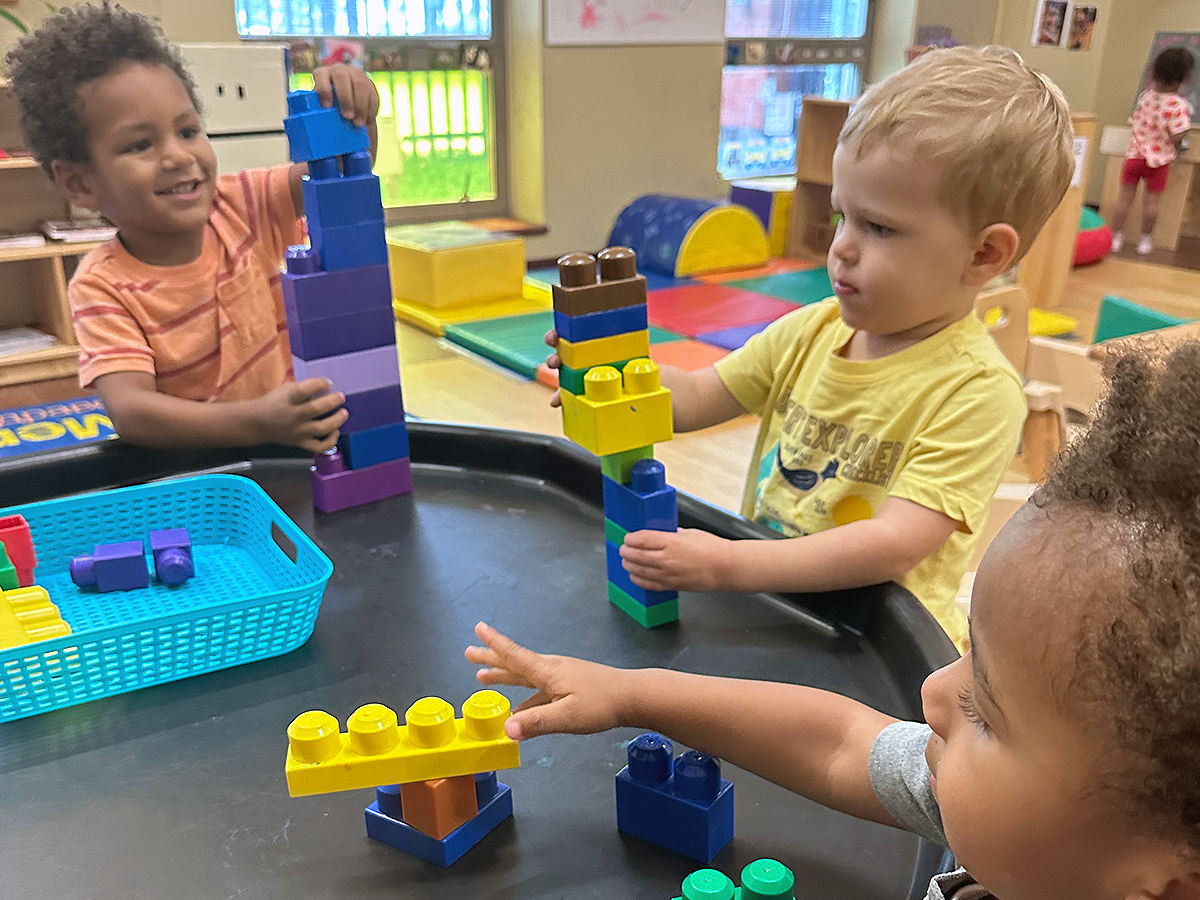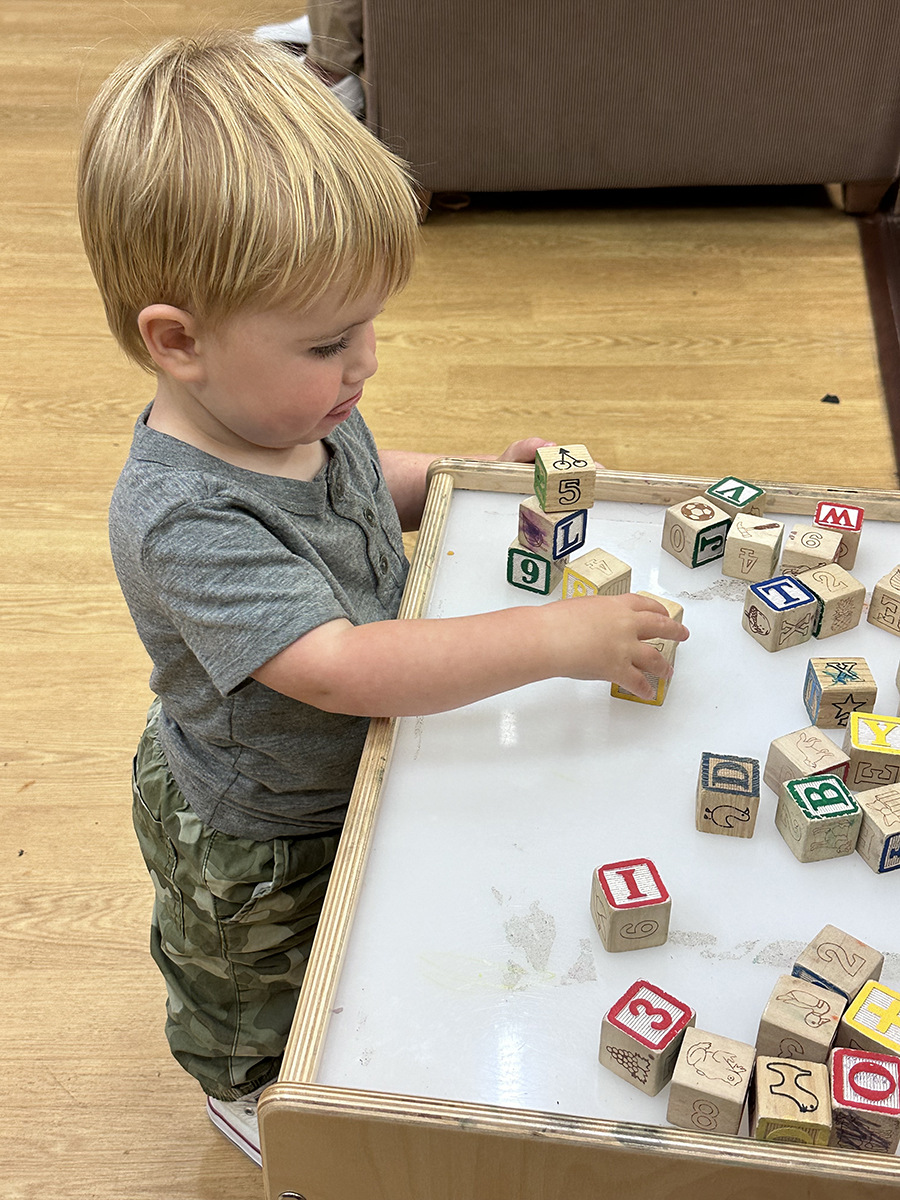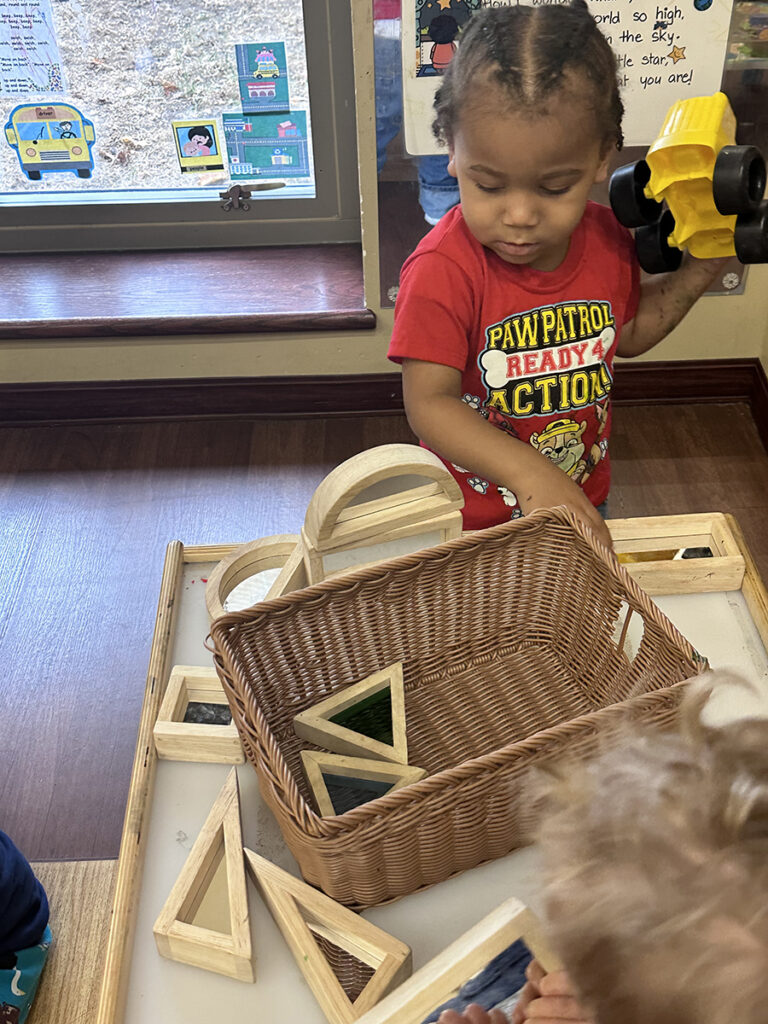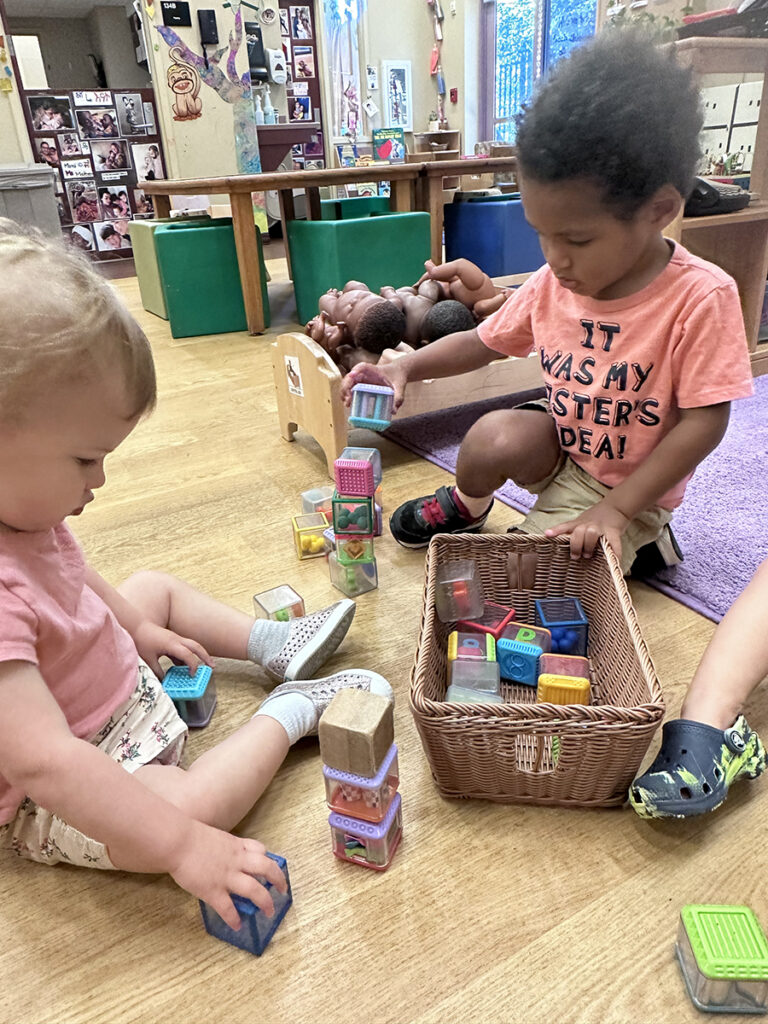
The toddler-age children have been interested in block building for more than three months. To sustain this interest, teachers have offered various block-building materials such as recyclable cups, mega blocks, foam blocks, Legos, large hollow wood blocks and dominoes.
The children have been stacking blocks on different surfaces and areas to test their stability. They have tried stacking blocks in sensory tables with water, outdoors on concrete, on the light table, with magnetic boards and on the floors.
Older toddlers often want to focus on their block-building work without their peers contributing to their structures — and they do not want other toddlers to knock their work down. This situation leads to problem-solving, with older toddlers moving their building blocks to a shelving unit and using that evelated surface to prevent easy access by younger toddlers. This problem-solving showcased the differences in the developmental milestones that the children were accomplishing. It is age-appropriate for younger toddlers to be more interested in knocking down their towers, while older toddlers use their developing math skills to count how many blocks they have stacked.
The teachers have been “scaffolding” this block building (so to speak) by asking questions, such as “What goes in this structure?”, “Who lives in here?” and “What kind of building is this?” Children begin to understand that they can use blocks to represent real objects, and they start to model their building structures from what they see in the world.



Stages of Block Building With Young Children
Carrying Blocks
- first starting to carry blocks around and pile them
- experimenting with the blocks to learn their properties (how heavy, what they feel like, and how can they be used)
- using the blocks in various ways, such as stacking, separating the magnetic blocks, manipulation of multiple blocks together
Stacking Blocks
- making horizontal rows or vertical stacks using the magnetic tiles
Connecting Blocks to Create Structures
- joining blocks both horizontally and vertically in the same grouping
- experimenting with new ways to join blocks, including bridging and enclosures
- using and replicating designs in the creation of structures
Bridging
- two blocks with a space between them, spanned by a third block
Enclosures
- placing blocks in such a way that they enclose a space
Benefits of Block Building
- Hand-eye coordination
- Early math and engineering skills
- Spatial awareness
- Improve fine motor skills
- Enhance logical thinking capability
Ohio Early Learning and Development Standards Met
- Physical Development and Wellness
- Mathematics
- Approaches to Learning
- Science
FEATURED PROJECT: Playing with building blocks offers young children the opportunity to develop logical thinking skills, early mathematical skills, hand-eye coordination and fine motor skills.

